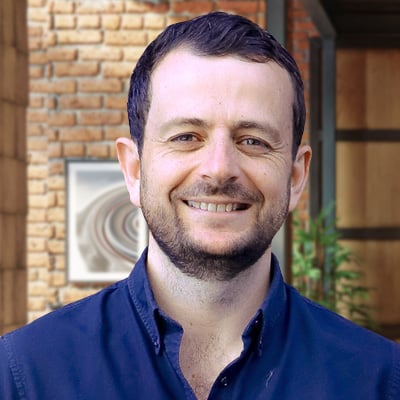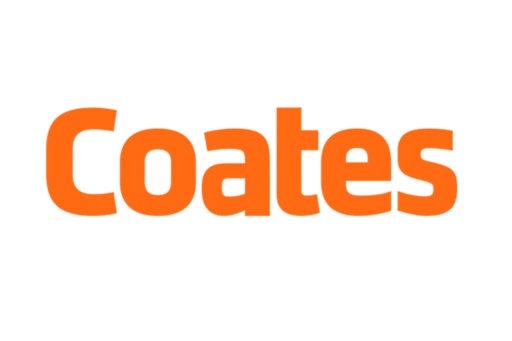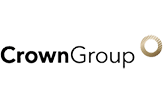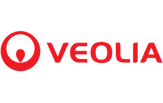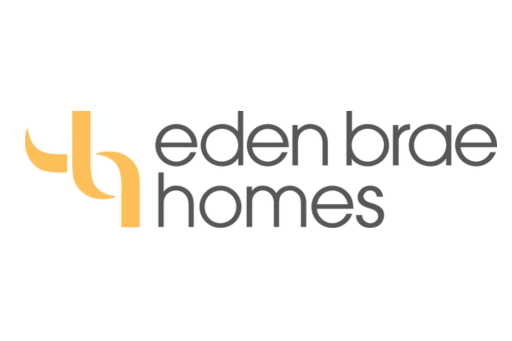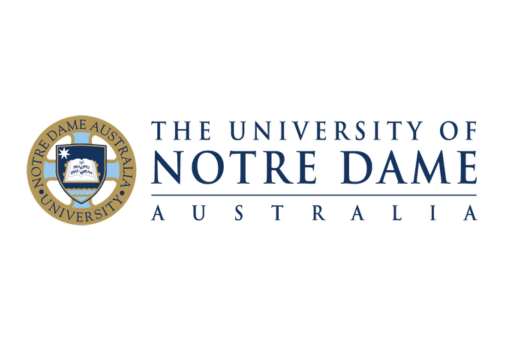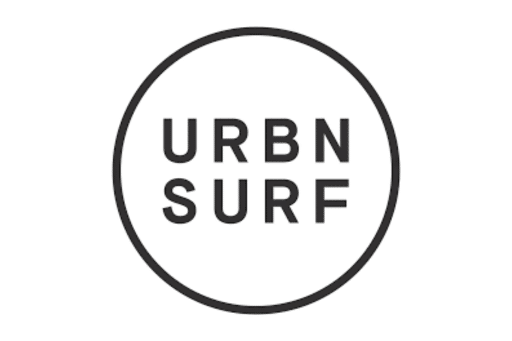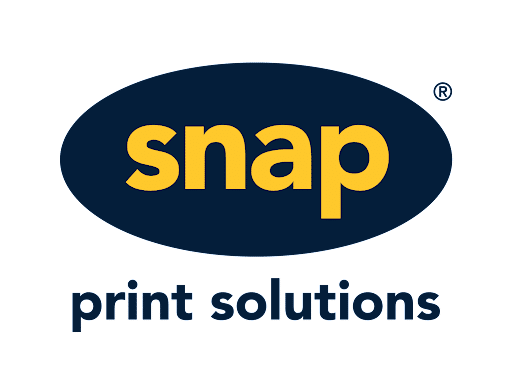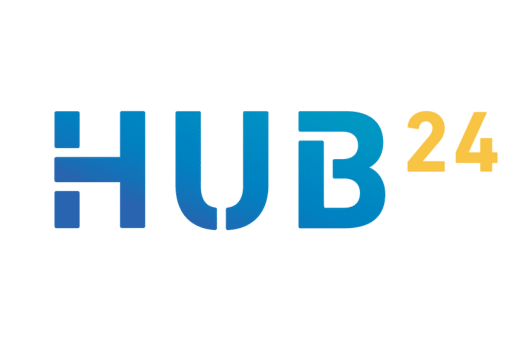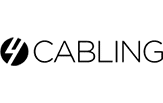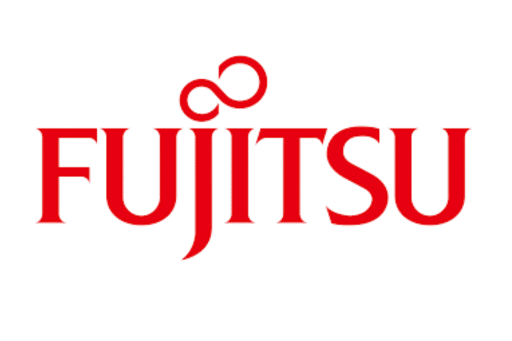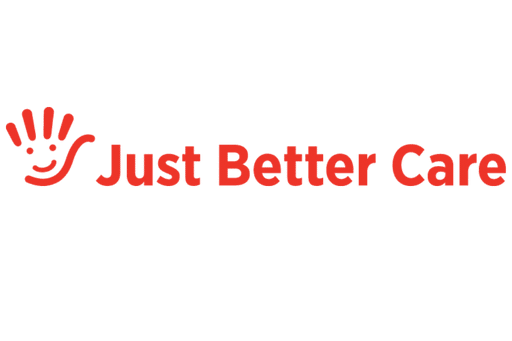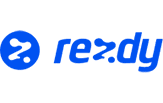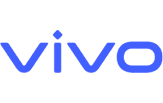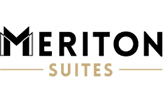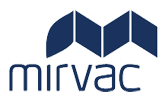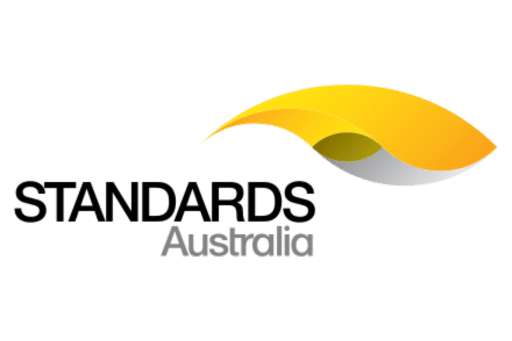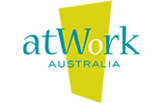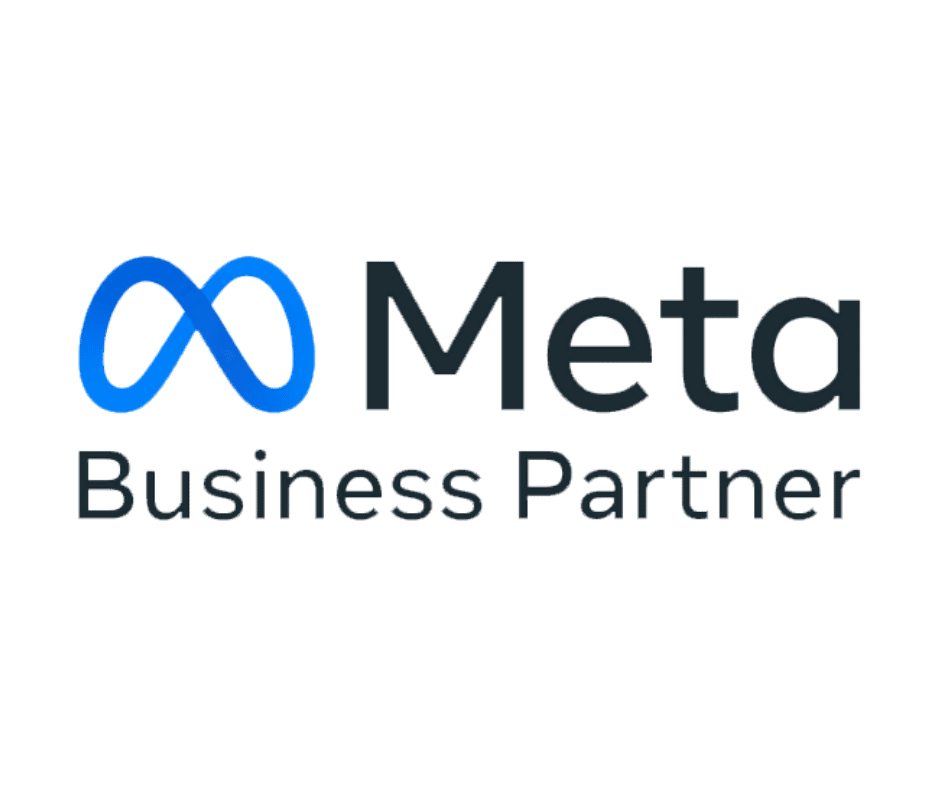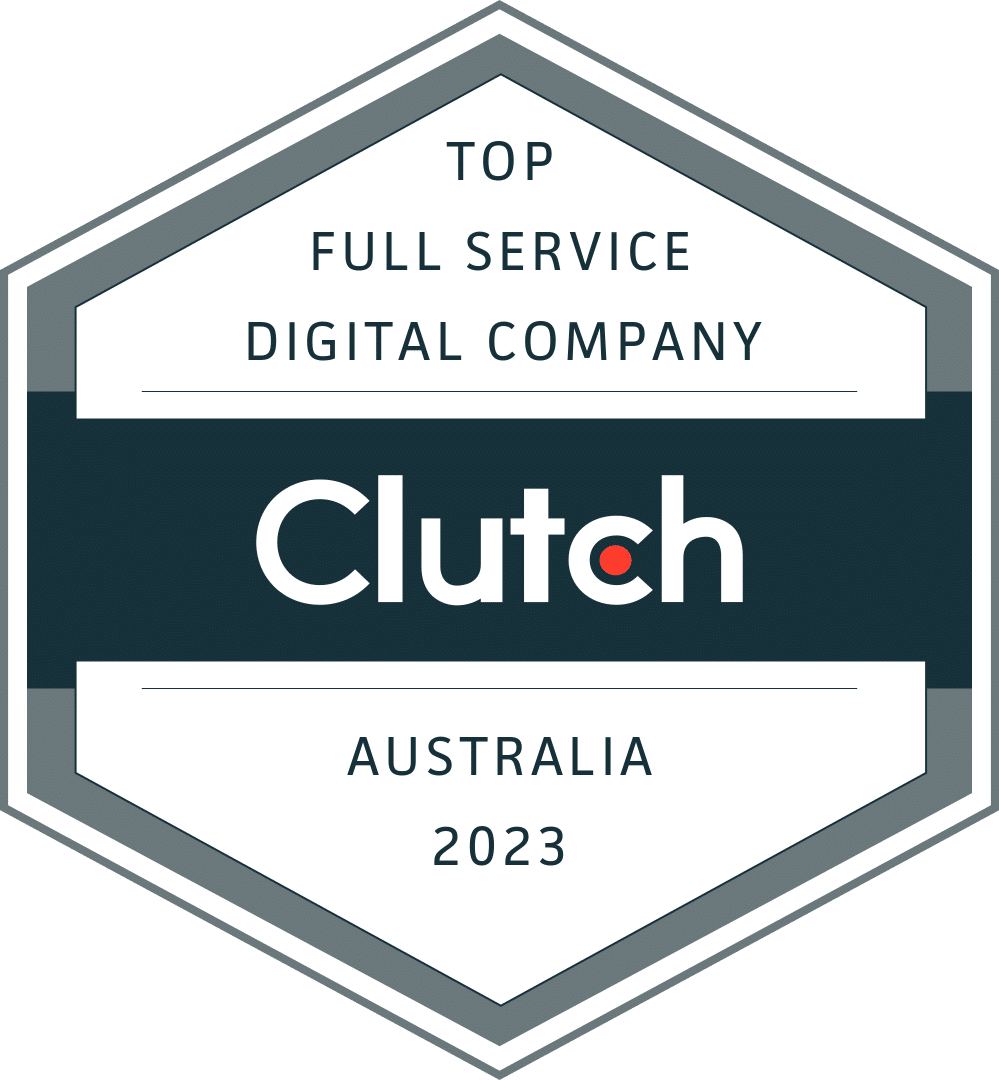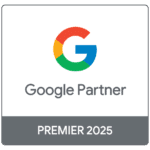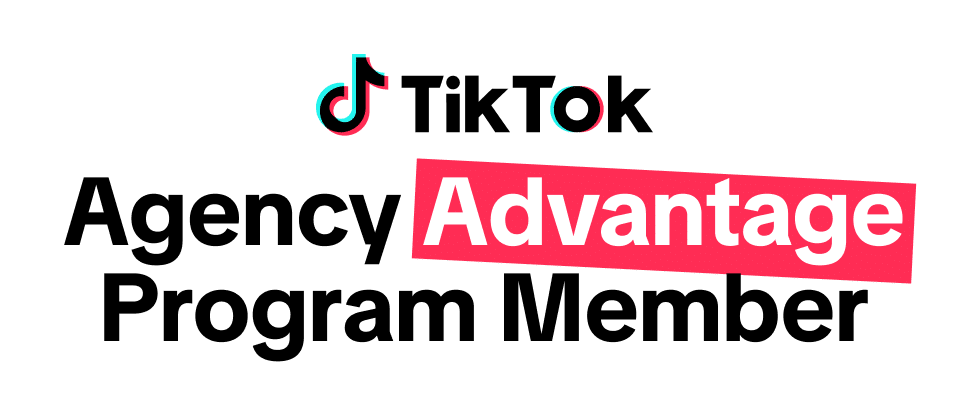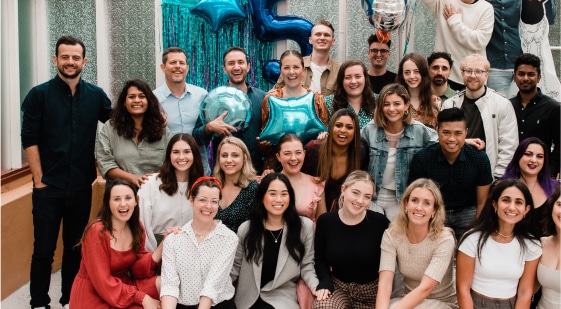How to Select the Right Agency with Darren Woolley
Episode Description:
Whether you’re a client looking to hire a new agency, or you’re an agency trying to land your ideal client… Darren Woolley shares the processes companies follow when picking the right agency for them.
Key Takeaways:
- What are the challenges when your client starts searching for a new agency?
- How do you know whether to stay with your agency or to move on?
- The importance of building a relationship when your client has a new CMO.
- Common processes clients follow to choose the “right” agency.
- The importance of the “chemistry session” in fostering a good client-agency relationship.
- The benefits of running workshops with potential agencies for strategic and creative ideation.
- Conversations around setting expectations about work, effort and results.
Additional Resources:
Featuring:

Darren Woolley
About the Guest:
Darren Woolley is considered a thought leader on all aspects of marketing management. A Problem Solver, Negotiator, Mentor, Founder & Global CEO of TrinityP3 - Marketing Management Consultants, Industry Commentator, Podcaster, and Author. He is also a Past-Chair of the Australian Marketing Institute, Past President of the Melbourne Advertising and Design Club, Ex-Medical Scientist and Ex-Creative Director.
You can follow him on Instagram [@_trinityp3_], LinkedIn, or find out more on his website.
Transcript
James Lawrence: I'm here today with Darren Woolley. Darren, welcome.
Darren Woolley: Thank you very much.
James Lawrence: So for those of you who don't know, Darren is an Australian marketing consultant. He's the founder and CEO of Trinity P3, which is a marketing management consulting company founded here in Australia. Now has offices in Sydney, Singapore, London and New York. Trinity P3 has more than 40 of Australia's top 100 advertisers using their services. Previous chair of the board of the Australian Marketing Institute, a long history as a marketing lecturer. And I think with this one, you can't deny because it's on your own LinkedIn, your LinkedIn bio reads, I'm a scientist who got into advertising as a copywriter and ended up a creative director.
Darren Woolley: That's true. All true.
James Lawrence: That's true. So, Darren, welcome to the pod. Today we're going to talk about how clients actually pick an agency. But before doing that, I think your story is such an interesting one. So I think it'd be just good for listeners to the pod to just hear kind of how it all started, how it came to be.
Darren Woolley: Well, look, I can go all the way back to high school and having an English teacher tell me whatever you do, Darren, don't go into any sort of profession where you have to write to make a living because your writing is terrible. So that's why I ended up a copywriter. Because, you know, people joke that you don't need to be able to write to be a copywriter, but in actual fact, it sent me on a path to becoming a scientist. Doing a Bachelor of Applied Science and working in medical research is where I found myself in my early 20s. And the trouble with science in Australia, is most of my colleagues ended up working in pharmaceutical companies. You'd go from science into pharmaceuticals. I decided to have a midlife crisis at 26 and try my hand at being a copywriter, and managed to get into a course called Copy School at the time in Melbourne, which took ten students every year. And you worked with some of the big names in the Melbourne industry, got a portfolio together and then started working in advertising.
Darren Woolley: But it was interesting because I rose up from junior copywriter to mid-level copy senior group head and then finally creative director. But the transition to starting Trinity P3 was actually sitting there. I was president of the Melbourne Advertising and Design Club, so very much focused on creativity and at the same time doing a lot of work with new business inside the agency at the time, which was J. Walter Thomson, now known as Wunderman Thompson. And it was interesting for me, I guess, from a scientific or analytical perspective in that I was talking to clients about new business and talking to the members of the Melbourne Art, Advertising and Design Club about creativity, and could see a real misalignment between the two because clients were saying the biggest problem was they felt that their agencies weren't listening to them, and creative people were saying they felt like clients weren't appreciating what the creativity that they had to offer. So wherever there's a gap, there's an opportunity. And that's where Trinity P3 came from. The idea that rather than working in advertising, I would work with advertisers and their agencies to improve the productivity and performance of that process.
James Lawrence: And I guess it's been a long journey in the business, but fundamentally, what is the business doing now? Because I think you do different things for different kinds of stakeholders. So just be good for listeners to have an understanding of core services and who you're doing it for.
Darren Woolley: A good way of putting it is it's actually in the name. When we talk about Trinity, people wonder whether it's a religious movement, but that is the marketers and their agencies and suppliers is two parts of it. But the third part for many years has been finance or procurement. So that's why we call it our unholy trinity. We've got three stakeholders here; procurement, marketing and the agencies. The P3 stands for helping people achieve their performance, creative performance, commercial performance through creativity. That's the focus of what we do. And that could be helping a marketer restructure their roster of agencies. It could be realigning an agency's performance using their fee structure. The way that works, it could be looking at ways of improving collaboration. There's a wide range of different services we provide, primarily for larger advertisers, because it's the larger advertisers where there's a huge amount of complexity. And one of the killers of creativity can be complexity; complexity of process, complexity of organisational complexity. And so one of the things that we try to do is rather than ignore complexity, we embrace it and help people navigate their way through that. It's that old saying of how would you carve a bull? You get a lump of marble and just pull off all the bits that don't look like bull, that sort of feels like what we do a lot of the time, metaphorically, because I think when an agency and a client and the procurement teams are deep in the process, they often can't see what it was that they were trying to do in the first place.
James Lawrence: It's a good observation. So a big part of the work is to help brands and advertisers go out to market and find the right agency for their problem or the right agencies to help solve a problem? Love to dig into that topic today. Like how do clients go about picking an agency and what works/what doesn't? What are the misconceptions? What are the things we can learn?
Darren Woolley: When you think about it, selecting an agency is probably something that most marketers would probably do less than once a year. It would be a very hard thing as a marketer to actually build a skill set through practice, because it's not often that you're running pitches, and if you are, you would have to ask yourself why you are changing agencies so often. And there are marketers that are renowned for changing their agencies like they changed their underwear. I think what we've seen is a use of pitching or a use of selecting agencies that goes beyond just finding the right partner. People talk about the fact that the average tenure of the client-agency relationship was up to 7-10 years as recently as a decade ago. Now we're talking about 3-4 years.
Darren Woolley: And there's often that question of why some people put it down to the same tenure as the CMO. We've seen the average CMO tenure drop to 3-4 years. I think it's also the use by procurement, especially at the end of every contract period, wanting to go to market as a way of testing the incumbent. And one of the things that we keep highlighting to our clients is a tender or a pitch, and I'll use those terms interchangeably while we talk about it, but that's a great way of selecting a new agency. It's the worst possible way of actually testing an incumbent.
Darren Woolley: And I'll give you an example. Think of it as a relationship. And for most people, their primary relationship is their domestic one. So imagine tonight going home to your domestic partner and going, well, it's been three great years, but it's time to renew whether we're going to commit for three more. I tell you what, let's both go out and date other people, and then we'll get back together in three months and decide whether we're still committed to this relationship. I'm not sure that's a winning strategy, and in some ways, it's even worse because it's the marketer who's going out to date other agencies while the agency sits there hoping that they're going to be selected after that process. So I think you can see in that metaphor that the use of pitching or tendering as a way of testing the incumbent is flawed because you are more often than not going to select a new agency than you are to commit to the existing. And all of the data supports that.
James Lawrence: Yeah, I think I read something similar recently. I think in Marketing Week maybe it was around like 24% or something like that. Putting my Rocket hat on, we’re pretty reluctant to go in when it's an existing client that is going out to market with a big RFP, big pitch. It's kind of something's not quite right here. Right?
Darren Woolley: Well, and it's tough as the incumbent - what do you do? You know that there's going to be lots of other agencies that are going to offer the world, they'll promise anything. And yet, as the incumbent, you know the limitations of the relationship and what the marketer can and can't accommodate. You know, where their strengths and weaknesses are. And besides, if you suddenly go in with an offer that's better than the relationship you've had, the question would have to be, well, why didn't you offer that in the past? Why have you suddenly discovered this amazing transformation to become the agency that I could have over here? I think it's really tough to put your incumbent to that sort of test. And yet a lot of marketers will say to us, oh, yeah, but the incumbent knows our business better than anyone. They've got the inside running. Know the fact that they know your business better than anyone is a limitation to their ability to compete with everyone else.
James Lawrence: I think what we're talking the conversation here is broader than digital performance. I think we're talking creative and media and a whole bunch of things. But in the small space that we play, often a key part of pitching is to diagnose issues, right? You diagnosing what's wrong with SEO or wrong with your Google Ads. And if you're diagnose anything, it's like, well, you've been responsible for it for the last two years, why hasn't it been fixed? So it becomes a very difficult kind of conversation to have.
Darren Woolley: I’ll just pull you up there because the other reason is that practical, measurable problems are often the symptom of an underlying problem that is often less tangible. And it's the same reason when we're talking about how clients pick agencies, they pick agencies largely on a sense of shared values - people call it chemistry. When things go wrong, they will pull out the tangible things, and this is why you get all sorts of weird; Google AdWords is not performing as well as it did, or the creativity isn't up to what it used to be, or we don't feel the strategies aligned to our expectations. These are pragmatic ways of really articulating the sense of, we don't feel you love us anymore, or we don't feel you're aligned to supporting us anymore. And yet that's quite a difficult conversation to have in a business context, because, you know, what do you do with that?
James Lawrence: What are your observations then? Should you go out to market and throw it open versus not going back to the partner and saying, hey, we've been together for three years, maybe it's time for us to see other people and come back together if we want to? What's the balance like? When do you go to your incumbent and say, let's fix these issues before we have to kind of go through that process? How do you know when you've got a good agency?
Darren Woolley: Look, most people would intrinsically know if you've got a good relationship, you feel that you're aligned, that you're working well together, that there are no major issues, that you feel like you're getting value for money because the agency is going above and beyond. They're proactive. Whatever it is that makes you feel that this is a good relationship. That's why it surprises me, because many of the surveys are just trying to quantify those feelings. The ones that go into; they do a good job here or they’re responsive here, that's trying to drill down into that more pragmatic area. But what I'd say to people is if you have a good relationship, even if you have a generally good relationship but there's a couple of issues you're better off trying to work through, you'll never solve those problems by going to market. All you'll end up with is a new agency, and often with the same problems.
Darren Woolley: The time to use a tender or pitch is if you either need some capabilities that none of the agencies you're currently working with can provide. Or the relationship that you have with a particular agency is irreparably damaged. Also when there's a new CMO or a new head of marketing, they'll often get a new agency. And that in some ways is often triggered by the fact that the incumbent agency never quite engages with the new CMO to make them feel like they're their agency. A lot of CMOs will contact me and go, well, I've been in this job for 4-6 months. And you know what? I've never met the CEO of the agency of my incumbent agency. And you just think this is ridiculous. Why wouldn't you be in there on day one or day two or day ten talking about; what's your vision? And get to align your agency to the new vision and the new expectations. Because every person has different ways of working, they have different expectations. And so when they end up going to tender in the first 3-6 months, it's often because their transition into that role and the ability of the incumbent to engage them has been flawed, fatally flawed.
James Lawrence: I think that's something that took us longer in business than it should have to realise, right? Once you have turnover in key marketing roles, it's essentially a new business. It's a new relationship, right? And you've got to get in there. And what remains the same and what things are different, and how do things have to be approached in a different way to reset the relationship? I think that's probably some good advice for anyone agency side listening to the pod.
Darren Woolley: Look, when you've got a new, especially senior marketer, you need to actively engage with them and not engage with them in a way of; this is what we do. Actually sit down and say, okay, we've been working well up to now previously, but we want to understand where your vision is. What is it that you say? What does success look like for you? Because here's the thing. If the previous marketer left because of underperformance, you're already tainted with the association of underperformance. If the new person has come in promising major change, don't become the change of agency is the first sign of major change. Change the agency to actually meet those expectations.
James Lawrence: That's it. And it's so easy in those contexts for agencies to be blamed. So come in there and kick the door down.
Darren Woolley: Especially if you're not proactively going almost over the top to say, hey, how do you want us to change? Because we can meet any need that you have. But I've seen agencies, they've got a campaign that they developed with a previous CMO. The new CMO comes in with a mandate to change. That's how they got the job. And yet the agency's arguing for keeping the existing campaign.
James Lawrence: It's not going to win.
Darren Woolley: You might as well just shoot yourself in the foot and hobble out of the room, you know? It's that bad.
James Lawrence: So how do clients pick agencies? Let's pretend that the relationship’s terminal or the need is something that the current agency panel can't fit. Our client quite rightly puts together an RFP or a tender process. In your experience, how do clients pick agencies?
Darren Woolley: It's really interesting because the first thing I'd say is they should select a very good consultant to help them navigate this path. Consultants are really only potentially managing less than 10% of the tenders in any market. So the first thing is, how does a client, a marketer, or even their procurement team start to select agencies? One of the things they can do is they could do some advertising and run an open tender. But what you end up with is lots and lots of agencies tendering for your business without any filter as to whether they're the right agencies. You could get all sorts of people doing that. What a lot of marketers do is they'll ask around all their colleagues, anyone in the industry and say who are good agencies, and they'll prepare a list from that. They'll also prepare agencies from who do they read about, and we have a saying that I picked up years ago that the average marketer has room in their head for three agencies in any category. That's the one they're with, the one that they've probably worked with previously and one other. So when it comes to agencies marketing themselves, positioning themselves, what they need to do is to think about, how do I get into that third slot?
Darren Woolley: And we hear of agencies that everyone's talking about, and we wonder why they get lots of new business opportunities, because they've found a way to get into that third slot, either through PR or winning awards or winning business. There's the hot agencies that clients want. And this was quite funny. I had a financial services client that was looking for an agency in a particular category, which was agribusiness. And they said to us, oh no, we don't need a hand. We've got a list of agri agencies. Oh, how did you get that? Oh, we just got everyone to ask their colleagues. Well, I said, oh, could I have a look at the list? And when I looked at it, all of those agencies were working with other financial services companies. They were all conflicted because they'd asked all of their colleagues that worked in financial services who then named the companies that they were working with. And there's a conflict of interest, so it's it's really hard. And believe me, agencies don't make it easy. Don't tell people a lot about what they actually provide. By the time the the animations and all those things load, they've moved on to the next website. If you type in digital agencies Sydney, you'll get a big long list.
James Lawrence: Number one, there's the Rocket website coming up. Number one.
Darren Woolley: That's right. But there's also a lot of other agencies there as well. And if someone's trying to get a sense of the marketplace, it's really difficult. That's why a lot of marketers and procurement teams will resort to an RFI where they go out and just invite a lot of agencies to submit some documents to tell us about yourself, so that we can start to get an idea..
James Lawrence: And what do you think of that process, just as a broader give us some credentials. Where do you sit in the market? What do you do? What do you not do? Like do you like that approach as a start?
Darren Woolley: Look, it's a good starting point if you don't have anyone to actually help you, or if you're not sure about what it is that you're looking for, I think it's better to be informed and then be able to put together a longer list. We'd say no more than 6 to 8. But you hear in the trade press of someone going to market and it'll be reported that they've invited 12 or 18 or 20. They've really invited them for an RFI to provide their credentials as a way of filtering through that. Recently, Fiji Tourism went to LinkedIn and asked everyone to submit their credentials and they got over 100 agencies. Now, that's a lot of filtering time and being able to filter. And are you really filtering for the best agency or the ones that write really good credentials? Because sometimes, there's a bit of the cobbler's shoes that the agencies that do the best work are not the ones that necessarily write the best credentials. You do have to be careful with that approach. But look, I have to say it's probably the only one if you don't have a rich source of industry knowledge to help you navigate that through that.
James Lawrence: And would someone like Trinity P3, if you've got a client and they need a creative agency or someone to manage media, or would you be recommending putting agencies forward, or would be just overseeing the process that that client is taking? Like, what's the what's the involvement of someone like yourself?
Darren Woolley: This is one of the misnomers about the pitch process because a lot of agencies think that we go along and recommend agencies. What we do is the US particularly, is that we sit down and we spend a lot of time really exploring with the client. What does success look like? We really want to know what it is that they're trying to achieve, and is the pitch the right thing in the first place? Because last year, over 60% of the marketers that approached us for a new media agency ended up not doing a pitch. They actually went back and we did a review of their incumbent in state. Going back to that earlier point about don't use pitches. We we convinced 60% of the the companies that came to us saying we want to pitch a new media agency when actual fact, they really just wanted to make sure their incumbent was fit for purpose.
Darren Woolley: But then we have a database with which has over 3500 agencies on it, and then we'll start looking through that for which are the right agencies that fit that brief. And we will sit down with the client and take them through all of those strengths and weaknesses. Why we think they're a good fit, things that they need to consider. And we'll ask them to get that list down to no more than six, perhaps eight at the very most. And the point of that is then we'll go to an RFI where we'll ask for specific credentials, usually around case studies. Of particular aspects that the client would value in an agency. Give us an example of where you've used data to inform a strategic process and creative, or show us where you've been able to, for media, where you've used media channels to specifically target difficult to reach audience or whatever it is that is the particular challenge the client has.
Darren Woolley: That then gives them a sense of who the agency is and what their capabilities are. And then we have the all important chemistry meeting. And I say it's important because I would say that chemistry capabilities is a table stake. If you can't do the job, you shouldn't be in the room. But the next filtering process is who do I trust? Who do I feel I could work with? Who is the one that I think we have? The alignment, the rapport, the cultural connection that we could work really well together. Because you've got to remember, in most cases you should be appointing an agency for three years plus. So you're going to be doing a lot of work together. And so getting that alignment is the right thing to do. A lot of clients will use creativity, or they'll use a media brief as a way of testing the relationship. And the problem with that is it really just tests their ability to deliver one solution. Now, if you're going to market because you just want someone to come up with the idea for you, then it's probably a very good way of doing it, you know? And government is often, they'll go to market just to get that campaign. But for the bulk of commercial organisations, marketing organisations, they really selecting a relationship. And that's why this chemistry meeting is so important.
James Lawrence: So much of what you've said, just so many overlaps with recruitment, like where you're kind of talking about Fiji Tourism getting 100 RFI coming back at them and potentially just picking someone that's really good at putting a creds deck together versus someone who's actually good at delivering. It's kind of like a job interview. Someone can be great at an interview, but can they do the job and then actually working with someone? It's a given that the person has the competency to do the job, but then the cultural fit kind of tying into the chemistry and three years is a long time. It's probably how long are you going to work with someone? And all those intangibles probably trump the ability to actually do the job at some level.
Darren Woolley: It's more complex, though, than a job interview because of the dimensionality of it. You know that someone comes into the room and you interview them and you interact with them. It's one person. And if they start being three different people or three different personalities before your eyes, it could be quite difficult. And also, that's who you're hiring. So one of the big concerns for marketers is, first of all, have they sent the A team, the team that just does the pictures. And then I'm going to be working with completely different people later. That's their first concern. The second is you've got to look at more than just the individuals, but also how do the individuals interact with each other. I remember running a chemistry session for a company that its culture was very, very respectful. And yet one of the agencies actually started an argument between themselves in the chemistry session, and the client turned to after he'd shown them out, the client turned to me and said, well, if they can't work with each other, they can't work with us. I was a bit surprised, actually, because that's the way they operate. But it was, you know, that's a overt example of a cultural misfit.
James Lawrence: From our experience, there's certain agencies who I think are really comparable to us in terms of what they do and who they do it for. Culturally very different, not better or worse, just different. I will speak to clients that end up picking us over them. And often it is; I like the dynamic of yourself and David. When I spoke to you guys pre-sale or I walked into your office and I felt a certain way and I spoke to those guys and I thought they were pretty arrogant. And that's just when there would be other clients that would lean into that confidence and the way that different agencies are.
Darren Woolley: That's why chemistry is so important. And when I say that, agencies will often say to me, well, how do we manage chemistry? Well, it's not about managing it as being aware of it. In many ways you have to be true to the culture of the business. But you can do things like casting, you can do a bit of research if it's a client that you really want to win, you can find out the culture of the place. You can ask around. You can get a sense of; if is this a real in-your-face type company that likes plain talking, or are they more laid back and considered and then cast people in that into that meeting that actually play to those strengths? So there are things you can do if you find yourself trying to be someone you're not.
Darren Woolley: Then I would say stop, because it either happened. And that's the interesting thing as well. We'll often organise a 45 minute chemistry session, but most clients within the first 30 to 60 seconds have already decided what sort of agency you are and whether they like you or not. And then the rest of the other 59 minutes is collecting all of the evidence they need to support that. And someone said to me, an agency said to me, so what do you do? If you can tell if you're reading the audience and you can tell that the client has decided they don't like you. The only thing you could do is totally disrupt the meeting in some way to reset their perception, you know? And it could be as simple as just reorganising where people are sitting or, actually, acknowledge and go, look, I think we got off on the wrong foot. For instance, say something that disrupts their thinking process and hopefully then land with a different perception, or at least get them to rethink the perception that they had in the first place.
James Lawrence: Have you seen that work, or is it first impressions count?
Darren Woolley: No, I've seen it work. I've seen agencies that didn't necessarily make the top of the list in the chemistry session still go through to the next and absolutely turn it around.
James Lawrence: Just going back one step. 6 or 8 agencies generally at this stage, when you said RFI’s, you want to bring like?
Darren Woolley: Shortlist from that three.
James Lawrence: Okay. So we start with between 6 and 8 agencies. We think they could be a reasonable fit. We go out to them and we ask them to respond with some examples, case studies?
Darren Woolley: Just to answer the question, do you have the skill sets and capabilities that we're looking for from that? Even if we’d asked eight, we don't necessarily see all eight for chemistry, because if some don't fit then we wouldn't include them. But just see all the ones that have potential. And then from that we would want to get to three after chemistry.
James Lawrence: So 4 or 5, six chemistry sessions probably?
Darren Woolley: Yeah. Probably 5 or 6.
James Lawrence: Yeah. Okay. We have those. We debrief afterwards. Didn't like it. Didn't sit right. Felt there was something there. Felt that they were excellent. Then we're down to three. And then what's the kind of what's the general process from there?
Darren Woolley: So then we go into, rather than we're not big on spec relative creative or getting agencies to do things in isolation because we believe that by working together, so we call it the test drive. We'll often then organise half day or full day workshops, depending on the client's appetite and their team to work with each of those agencies on a strategic problem. Now, if it's a media pitch, it'll have a particular channel or media focus. If it's creative, it'll have a comms strategy focus. If it's digital - and it's interesting because digital and creative or digital and media are often ending up very similar - but it's really discussing and trying to solve some big major issue or challenge that the client has.
Darren Woolley: Now why is that good? Because rather than sitting there in a presentation mode, it's a workshop where both the market and we say to the marketers, bring along the team that is going to be working with the agency. And we say to the agency, don't bring the people that do your presentations. Bring the people that do the work on day to day basis so the client can really get a sense of who the agency is. And the agency, more importantly, gets a sense of who the client is. And sometimes we're doing creative or digital, we'll even have the media agency send along people into that process, the incumbent media agency, for them to have some input into it. This really is an opportunity to test drive how everyone's going to work together.
James Lawrence: And would that be paid like with the client be paying the three agencies for the day of work, or is that part of the cost of pitching?
Darren Woolley: We'd say that's part of the cost of pitching, because it's certainly much cheaper than working on a speculative creative brief and working that up into hundreds of different executions. So it's a half day or full day workshop, and often it's more about testing how the agency thinks and approaches the work, rather than necessarily the solution they come up with. Because, let's be honest, a pitch is no way to actually develop a strategy solution. It's such an artificial construct. Having said that, by turning it into a workshop, clients will often say they get more out of that than allowing an agency to go off and work on something in isolation and then come back and present it, so we've been doing these workshops since 2007. It was actually something that I first heard about and saw working in Europe back in 2007, and we just adapted it for for the way we work.
James Lawrence: Interesting. And do you find do you get pushback from agencies because it is a little bit atypical to the general kind of pitch approach, or do you find they like it because it's rather than spending your 120 hours putting a deck and putting your creative forward, you get to just do it live?
Darren Woolley: In the early days, yes, people were surprised. We had one agency who were great at presenting, and they turned up at the workshop and they presented for two hours. And then in the second half of the workshop, it was like, well, what happens now? And in fact, as we've rolled this out into the US and the UK, the agencies are really confronted by - at the moment we're running a pitch in the UK and the agencies are going, well, when do we present the creative and when do we present the media plans? And we're going, no, this workshop is where the client is assessing not just your ability to do the job, but your ability to work with them, how well the teams get along and clients.
Darren Woolley: Even clients are confronted by this process when they first hear about it, because the idea of having to do three workshops with three different agencies. But every time at the end of that process, the feedback is so valuable. Provided them so much more detail about the agency, gave them such a better understanding of what each agency was like to work with that. At that stage, they're really clear on who they want to work with. And so that's why in the background to those workshops, we run the financials so that at the end of it we can sit down with the marketers and they can go, well, agency B is our preferred. How do they stack up financially. And then we can have that conversation around value. Because if agency B is better than C and A and they're a little bit more expensive, then that's good value.
James Lawrence: Yeah like are you saying that's running a team parallel or that's post these three sessions?
Darren Woolley: The financials run in parallel with the workshops. So while the team is in the workshop, the agency finance people are filling in our Excel spreadsheets, we're doing the analysis. Then after the workshops we have a meeting with the client. We say, okay, you've you've had three experiences with three different agencies. Let's rank them, which was the best to the worst. Why? What was it that was good? What was not so good. And then when they've made that choice, we then overlay that. Well agency A is X dollars, agency B is two X and agency C is X minus.
James Lawrence: I'd love to hear insights into value and price and cost and procurement and our businesses buying on value. Is it a race to the bottom? It probably depends. Like I'd love to hear just what actually what happens.
Darren Woolley: Consult the consultant. It depends. So here's the thing. Most marketers will have a budget and most marketers will know what or think they know what they've been paying the incumbent agency. So from a procurement point of view, if they are focused on cost, they will be looking to reduce the cost. The thing is that unless you know what the agency produced previously, the cost alone is not enough. You might know how many people were working on your business, but what did those people produce? And these are the conversations we have. When people talk about benchmarking, they'll often mean average benchmark. So over everyone in the industry doing what you do, what's the average cost of that? Whereas we always use a high, medium and low benchmark because then you can get into a conversation of, well, do you want what some people would call a tier one agency because this is what the benchmark would be. Tier two; somewhere in the middle, and tier three is below average, below the median or below the average, because you know that they're important conversations around setting expectations of what you're going to get.
Darren Woolley: And I had that conversation once. The client had left the incumbent against all recommendations, and the incumbent was half the price of the other two agencies. And they're going, but look how much we could get. It's like they're half the price. And I said, well, it's like you drove to this meeting in a Datsun 120. To use a 20th century metaphor, we've taken a BMW and a Mercedes-Benz for a spin. But when you've seen the price, you're telling me you're happy to go in home in the 120. Why? You've got to see the price for the quality and value of what you're getting. And I think that's a really, really important consideration. Because what is value? Value is not just the price of the people, but what those people are going to produce for you and produce from a productivity point of view is about the volumes of work that they're going to produce, and from a quality point of view, is going to be the outcomes that work is going to deliver. So in the case of Rocket, it's not just you get 2.5 people FTEs for that price, but those people are going to be expert in paid social or paid search. And we will deliver. You know, your target is growth of x percent. We buy into that and we're going to work to deliver that.
James Lawrence: That's it. And I think, not even just in digital marketing, but more broadly with creative space, media buying, you want an expert doing great work, not someone average doing lots of work. Like the power of an idea or the power of solving a particular problem, over just having someone doing executing against a bad idea.
Darren Woolley: That's a much bigger conversation, because in actual fact, the way social media and digital channels, the plethora of an expansion of those and the volume that they consume. In content means that marketers today have to play a quality and volume. So performance and productivity because we've been tracking agency outputs by brand. 2005 it was around 200 to 250 outputs per brand per year. Now it's 2500 plus. Now why is it two and a half. Well how many Instagram updates do I need? How many Facebook carousels am I going to need? So on and so forth. You know how many digital display ads and YouTube pre-rolls am I going to need? So there's suddenly this volume where you want the quality is in the thinking and the original execution of the idea, where you want the productivity is in the rollout of that to be able to produce large volumes fast. And this is where things like automation should be much further advanced in the industry than they are. I mean, that's a different conversation.
James Lawrence: It is different, I think, like the tactical execution, obviously, if it is literally just a commodity, then you pay as less as you possibly can for them.
Darren Woolley: But the conversations that we try and force with the client because the agency will in many ways want to have the same fee end to end. And we say, well, no, let's think about where value is created, value is created in strategy ideation and then the implementation. Where in that part is there value and where are the parts that we should be looking for? Economies of scale or cost reductions.
James Lawrence: Which makes sense if you're on the other side of the fence. I'd like to dig into because I think that's a really good process. It's almost like a funnel, right, in terms of how you move through and whether you actually should even be going out to market and looking for a new agency? But presuming you go through that process and do it well, what are the things that are driving clients to pick an agency outside of the things we might normally expect? Price case studies, competency, like what are the things that you've seen that we might go, hmm, interesting? Would have thought that wouldn't have played a factor when it does all the things that maybe conversely, we would typically think would be big factors in picking an agency, but clients actually don't seem to care too much?
Darren Woolley: Some of the things that agencies think are important, like awards for instance, are great for agencies to recruit people but are not necessarily that interesting for clients. Case studies for other clients. Agencies will spend ages developing a beautiful bit of film to show a case study, which is all about the performance of the campaign. For a lot of clients, unless it's in their category or unless they know the brand well, they don't see it as either relevant or believable because a lot of clients will sit there going, yeah, this is the agency's take on it. It's not necessarily what really happened.
Darren Woolley: So I say to agencies, just be very careful if you're presenting awards, present them in the context of the ability to attract great talent to your agency. It's not a fig jam moment. And I'm sure everyone knows what that means. If you're presenting case studies, use the case studies to actually illustrate or support the point you're trying to make. And the one I always say is, if a client says, how good are you, James? Actually collaborating with other agencies because it's really important. Now the case study could actually be about collaboration. It doesn't have to be a case study about how you got $400 million worth of free media equivalent value out of a viral ad that you did. You know what I mean? Because it's a way of proving the point rather than just, you can imagine the dumbest answer to that is, oh, we're really collaborative.
James Lawrence: As opposed to here's an example of us working with three different agencies for this particular client. And we did this, and we did this, and we had these meetings and have this. This spreadsheet internally and whatever it might be. Right?
Darren Woolley: And yet, a lot of the things that clients are looking at in their tick boxes, do they have the skills and the capabilities? Yes. Do they? Do they understand or appear to understand my business and my challenges? Do I think these are people that I could work with and help me achieve my goals? Yeah. They're the three main ones that they're looking at.
James Lawrence: So chemistry session big time in terms of that rapport relationship. What's that actually going to be like?
Darren Woolley: Look something has changed. You know in the 80s and 90s, agencies thought it was all about showmanship, and coming in and putting on a bit of theatre and being slick, in actual fact, and particularly during the pandemic when pictures were happening virtually on video conferencing, it's come down to authenticity being real, listening, not talking over each other or the clients, responding to questions in a thoughtful way, not waffling on for ages. These are the things that everyone picks up on.
James Lawrence: Interesting. That kind of feels like a broader theme right across marketing in general. We talk about it a lot in the pod where brands have less power than they used to have in terms of controlling the buyer journey, giving information to customers, when the brand wanted to. And now it's kind of gradually been changing. Whereas customers, we have more control. There's more user generated content about in terms of reviews, if you're buying a car, you're not just looking at what the manufacturer says about the car and authenticity videos are these themes that I think are we're having to move and gradually evolve towards compared to where we were.
Darren Woolley: Now the other thing I'd say is that's the performance of the pitch. The other thing that's really important is getting the paperwork done properly. Because no one chooses an agency without having to go back and have to justify it to someone, whether it's the CFO or the CEO or head of sales or whatever. So that's one of the key things is to actually make sure your paperwork gives them the support that they can then justify that decision.
James Lawrence: What are we looking at there? We're talking terms and conditions or commercials or?
Darren Woolley: The leave behind document that supports everything that was said that meets all the criteria. It's a bit like you bought that prestige luxury European car because it just made you feel really good. But when you get the glossy brochure out, you point out all of the rational reasons why you actually made that choice. And that's full for the agency. What the role of the leave behind is.
James Lawrence: Okay. And core includes and a good leave behind.
Darren Woolley: If they've given you a structure, lay it out in the structure that they've given you so that they can easily navigate it. Make sure that you answer everything, but don't waffle, you know, just give the core information that's required.
James Lawrence: This sounds like it's you passing the university test back in the day in science. Yeah, just answer the question.
Darren Woolley: Well, that is one of the issues years ago when I was talking to marketers and they go agencies don't listen. One of the ways that we as agencies send that message to clients, is the client might ask something like; James, do you have the ability to be able to use my first party data to make our social media paid advertising more effective? Now, the answer to that is yes, but most agencies will then waffle on for 10 or 15 minutes, not just answering that question, but trying to answer every other possible permutation, combination, or hidden question that could be inherent in that question.
James Lawrence: How we do social media, how we do digital marketing. Yeah.
Darren Woolley: And so just to answer and go, but would you like me to go into more detail? Says that you're actually listening and engaged and that you're not there to try and big note yourself or prove something that actually doesn't need to be proven. And I've seen agencies, I'll say to them, look, you've got an hour for chemistry. I wouldn't take more than 20 or 30 minutes to present your agency and then have 30 minutes of conversation. And at 55 minutes, we're going, you know, time's up, you know, and they're still talking about themselves.
James Lawrence: You're not building a relationship by talking about yourself at 55 minutes, right? Darren, there's some great stuff in here, which I don't think I can launch this pod because I think I'll just keep it for Rocket’s benefit. Why would I give the competition any insights into how clients are actually procuring marketing services? We always have the question of what's one piece of marketing advice that you'd give to an in-house marketer?
Darren Woolley: I would say that the thing is, just because you can do something doesn't mean you should. And that this is why anyone that is working in marketing should be very clear on their strategy. Because strategy doesn't just tell you what you should do, it also tells you what you shouldn't do. And so if you've got a strategy that you can use on a day by day, minute by minute basis to help you inform your decisions about that, you will never be in the situation of feeling like you have too much to do, and too little resources to do it.
James Lawrence: That's an excellent takeaway. I like that. I said that was the last question. I’ll ask one more. Where can we find you?
Darren Woolley: Trinityp3.com is our website. I'm on LinkedIn as well, but I'm happy to have conversations with anyone that's interested in improving the productivity and performance of their marketing.
James Lawrence: Excellent, mate.
